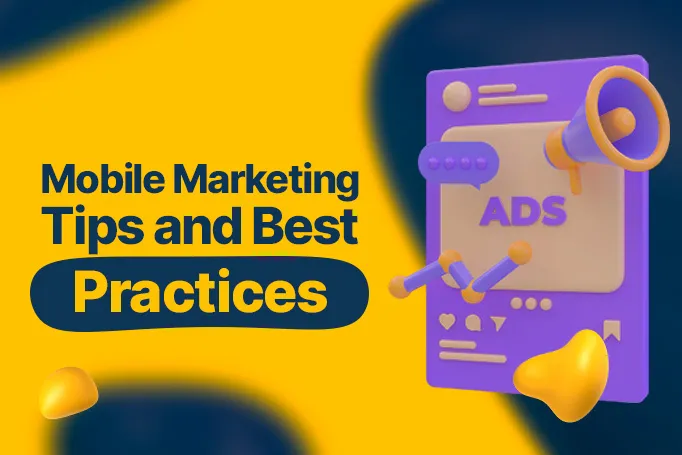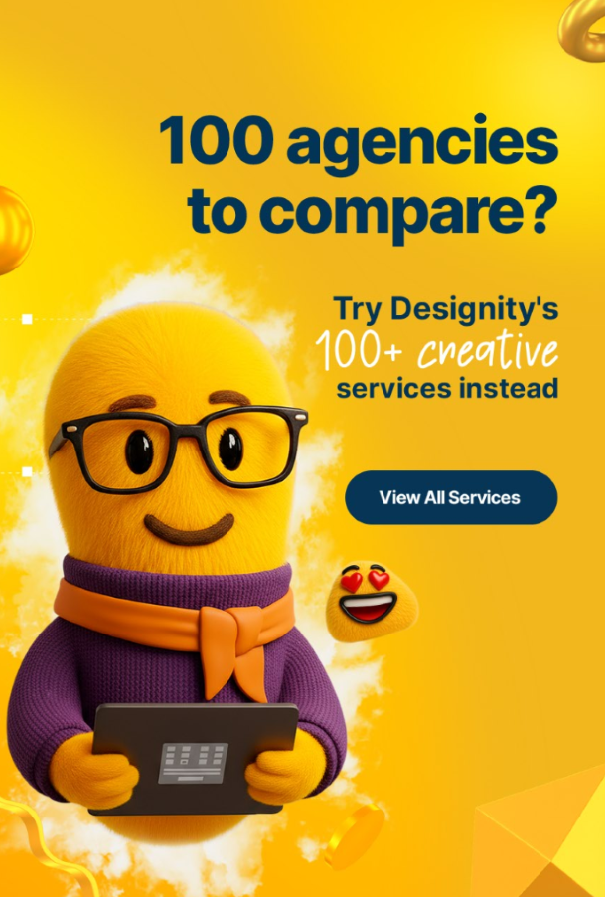Why You Need a Mobile Marketing Strategy
Recent data suggests that the average person spends 3 hours and 15 minutes on their phone each day.
3 hours and 15 minutes.
That’s more than an entire Marvel movie worth of scrolling.
But if you stop and think about just how many people stare at their phones while they’re in the store, waiting in line, riding the subway, or avoiding small talk, it makes sense, doesn’t it?
Your target audience is constantly on their phone and if your marketing efforts don’t already extend to meet them there, then they absolutely should!
Not sure how to do that? No worries, we got you.
Today’s blog is going to be your guide to mobile marketing strategy. We’re laying out our best tips and best practices so that you can effectively reach your mobile audience, capitalize on their screen time, and boost your brand’s awareness, visibility, and engagement!
Mobile Marketing Trends for 2024
Getting in on mobile marketing isn’t just a good idea; it’s essential these days! And with coverage increasing everywhere, mobile use can only grow in the upcoming years.
Here’s a little snapshot of what we can expect in 2024 and beyond.
- More users making purchases on mobile devices — The pandemic of 2020 brought on some significant changes to how customers make purchases. Travel restrictions and quarantines made it necessary to shop online and, since so many folks found themselves with some more downtime to sit and play on their phones, it was only natural to start shopping via smartphone too. These days, having a version of your e-commerce site available on an app store is a good strategy for your long-term success.
- Mobile video content is increasing — Thanks to video-based apps like TikTok, Instagram, and YouTube, consumers are conditioned to watch and share videos, which brands everywhere are zoning in on with increased video content. And the younger the demographic, the more video content they consume. In case you needed some ideas on how to best market to Gen Z kids.
- Customers are shopping more on social media — Social media platforms have evolved into e-commerce hubs, giving customers the opportunity to click and shop directly through platforms like Facebook or Instagram. This convenience has naturally led to a rise in social commerce.
- Streaming is expected to increase — With the rise of video streaming platforms and various live streaming apps, mobile users are expected to consume more and more streaming content on their devices. This presents an opportunity to start advertising and engaging with users through streaming platforms like Disney+ or Netflix.
- User-generated Content is increasing — The trend of user-generated content (UGC) is on the rise too, with customers cheerfully creating and sharing content related to brands and products. This content can serve as an authentic endorsement of your brand to influence other buyers!
- AI is on the rise — Artificial intelligence is becoming more and more integrated into mobile marketing strategies. AI chatbots, personalized recommendations, and data analytics are all enhancing user experiences and helping businesses make better and more data-driven decisions.
Knowing what’s been and what’s on the horizon for mobile users, you’re going to need a variety of mobile marketing strategies that keep this information in mind.
6 Mobile Marketing Strategies for You to Try

And since all screen time isn’t made equally, your mobile marketing efforts shouldn’t be either.
Your audience’s mobile device habits vary, so you’ll need to try as many strategies as you can to try and target your mobile marketing audience.
Here are six places you can start:
1. Social Media
Many smartphone users spend much of their screen time scrolling through Instagram or their preferred social media sites.
Leverage those social media marketing platforms for marketing by creating engaging content for your users to sift through that is tailored to each platform. Consider fun branded activities that can easily be enjoyed on a phone, like a photo or a selfie contest.
You can also use paid advertising to get your social media content to an even wider mobile audience. For the best results, be sure that your content:
- Encourages your followers to interact — Your content should encourage your users to share, follow, like, and subscribe.
- Uses popular hashtags — Using trending hashtags increases your discoverability.
- Asks engaging questions or otherwise encourages comments and other forms of user engagement.
2. Mobile Commerce
Mobile commerce focuses on streamlining and enhancing the process of mobile transactions and purchases made through your mobile apps or mobile-optimized websites.
To make best use of your mobile commerce, it’s crucial that you prioritize the customer experience as much as possible. You can do that by:
- Optimizing your product listings — Creating visually appealing product listings that provide concise yet solid information, high-quality images, and are easy to navigate makes everything better for your customers. Their screens are smaller so optimizing your listings helps them quickly find the products they want without frustration.
- Simplifying your checkout process — Mobile users don’t have the option to easily click over to another window for more info so a long and complicated checkout can lead to abandoned carts. Make your checkout process as hassle-free as possible to encourage more purchases and provide a positive experience.
- Providing secure payment options — Your users will purchase more from you if they know their information is secure. Offer secure payment options with trust signals to build credibility and improve both your conversion rates and recurring purchases.
3. Location-based
A location-based mobile strategy involves targeting your users based on their current physical location, which makes it a perfect strategy to try if you’re a brand with a brick-and-mortar store!
Many advertising platforms like Google Ads, Facebook Ads, Braze, or Leanplum provide options for location-based campaigns, so take advantage! This will enable you to send location-specific information to customers in your general vicinity, including:
- Offers, promotions, and sales — Do you have any discounts or promotions going on at your store? That’s something your customers definitely want to know.
- Event notifications — Got something fun going on? Let your users know!
- Store Information — Store hours, offerings, and directions.
Getting this info to your customers is a great way to encourage them to come closer and check out what you have to offer!
4. Proximity Marketing
Proximity marketing, like location-based marketing, also targets users based on their physical location.
The primary difference is that proximity marketing uses technology like beacons or geofencing, which lets you create virtual geographic boundaries around your store or a certain area. When users enter or exit these areas, they can receive all of the same location-based notifications and offers listed above.
This allows you to pinpoint customers with higher accuracy, as in the folks just down the street or around the corner from your store, making it more likely they’ll wander over within minutes!
5. SMS Marketing
People love to text, so why not get in on that with SMS marketing?
Sending short, engaging text messages to your user list’s mobile phones can be a very effective way to inform them about any sales you have going on!
Consider sending texts to announce:
- Sales and Discounts — Flash sales, limited-time offers, mobile-only offers, and any discount your brand is running, you’ll want to let your customers know to encourage them to purchase.
- Personalized Product Recommendations — Messages based on browsing behavior or past purchase history can be a perfect reminder and encourage additional sales.
- Event Reminders — Keep your audience informed on any upcoming events, like appointments, webinars, product launches, grand openings, or other special occasions.
- Customer Support — Give your customers a direct channel to get their questions answered or request help. Take care of your customers and they’ll take care of you!
- Greetings — Build a sense of community and a more personal connection by sending warm wishes, birthday greetings, or other seasonal messages.
Remember to always include a link for the user that takes them directly to what they’re looking for!
6. In-app Marketing
If your brand has a dedicated app that customers use, then odds are that they are already enjoying your brand and the products or services you offer.
Leverage this to optimize your mobile app marketing strategy and:
- Promote your products and services — Your mobile app can be your platform to showcase and advertise your brand's offerings, providing users with information, visuals, and enticing details about existing or upcoming products or services.
- Provide personalized recommendations — Implement algorithms and user data analysis within your app to offer your loyal customers customized product or content recommendations based on their individual preferences and behaviors.
- Encourage specific actions — Prompt your users to take desired actions, like making a purchase, leaving a review, sharing content, or engaging with other features. This can be fun for your user and also lead to increased engagement and conversions.
You can also use paid in-app advertising within other mobile apps relevant to your brand and your target audience to place content like ads, banners, and sponsored messages offering the same.
Mobile Marketing Best Practices

Now that you’ve gotten a sense of where you should be focusing your efforts, we’ll go over some tips to make it more effective.
Here are some of our best practices to further hone your mobile marketing strategies and start driving results!
Make it Personal
Personalization is powerful no matter what kind of marketing strategy you’re using.
Tailor your content, offers, and messages to your individual user’s preferences, pain points, and behaviors. You can narrow this down using user data analysis, past interactions, and using customer profiles.
Personalized marketing not only increases engagement and conversion rates, it also resonates more effectively with users and helps your brand better connect and foster the brand loyalty you’re looking for.
Keep it Short
Think about what you’re doing when you’re normally scrolling through your phone.
Are you taking a quick peek while waiting for your turn at Burger King? Taking advantage of a red light? Waiting for a download?
When it comes to mobile marketing, keep your messaging short. Mobile users have limited attention spans and are usually either on the move or multitasking, so use visuals and craft short, punchy messages that get to the point quickly.
Automate When You Can
Marketing automation not only saves you time but greatly increases efficiency.
Use mobile marketing automation tools (more on that later!) to easily and conveniently schedule messages, trigger responses, and segment your audience.
Automation makes it that much easier to timely and consistently communicate with your users.
Definitely Use Location Marketing
Location-based marketing is incredibly effective, especially if you’ve got brick-and-mortar stores.
Use geo-targeting to send location-specific messages, offers, and notifications to users in proximity to your physical stores or any live events you have going on.
This approach leads to more drive foot traffic, which in turn can boost your sales!
Remember the Difference Between Smartphones and Tablets
Tablets may look like they’re just giant smartphones that are easier to type on, but it’s important to understand that smartphones and tablets are different platforms.
Tailor your content and experiences accordingly. Make sure that your website or mobile app is responsive and adapts seamlessly to whatever screen size your visitor is viewing your content on.
Our Favorite Mobile Marketing Tools

Below, we’ve listed out our favorite mobile marketing tools to help you along with your strategies. They’re separated by category, so feel free to scroll through and look up the tools that would best suit you and your strategies!
Mobile Apps Analytics
Tools to help you gain valuable insights into user behavior within your apps! These platforms provide you with critical data and user interactions, app performance, and demographics.
- Google Analytics: Google Analytics is a widely used web analytics service that also provides mobile app analytics. It helps you track user interactions, monitor app performance, and gain insights into user demographics, allowing you to make data-driven decisions to enhance your app's performance.
- Firebase: Firebase, a Google product, offers a comprehensive mobile and web app analytics platform. It enables you to monitor user behavior, track events, and collect data on user demographics, helping you optimize your app's performance and engagement.
- Flurry: Flurry is a mobile app analytics tool by Yahoo that provides insights into user interactions, app usage, and user demographics. It offers valuable data for understanding how users engage with your app, allowing you to improve user experiences and retention.
Push Notification Platforms
Push notifications are a great way to engage and retain users on mobile and web apps. They send timely updates and messages to your audience to make sure your brand stays on their mind.
- OneSignal: OneSignal offers powerful push notifications and in-app messaging services to engage and retain your users on both web and mobile apps.
- Pusher: Pusher provides real-time communication tools, including push notifications, to enhance user engagement and experience.
- PushEngage: PushEngage is a push notification platform that allows you to reach your audience with timely updates and messages, keeping your brand top-of-mind.
- iZooto: Another push notification platform designed to help brands connect with their audience through effective notifications.
SMS Marketing
Texting is an effective way to reach your audience. The following tools let you send short, engaging text messages directly to your user’s phones.
- Twilio: With Twilio, your business can send text messages announcing promotions, offers, and personalized recommendations straight to your users' phones.
- EZ Texting: EZ Texting provides a user-friendly platform for sending short and engaging text messages to your audience.
- SlickText: SlickText specializes in SMS marketing, helping you send targeted text messages to reach your customers more effectively.
- TextMagic: TextMagic offers SMS solutions to send important updates and information directly to your users.
- Avochato: Avochato is a platform that streamlines text messaging for businesses, making it easier than ever to engage with your audience.
- Textedly: Create and send SMS messages to customers, helping promote your offers and announcements.
Mobile Ads Platforms
To promote your mobile app, you’ll need the right advertising platforms. The following platforms offer precise targeting and analytics to help you optimize your mobile advertising efforts.
- Google Ads: Google Ads is a widely used advertising platform that provides precise targeting and analytics for optimizing mobile advertising campaigns.
- Facebook Ads: Facebook Ads offers extensive targeting options for reaching your audience with mobile ads on the biggest social media platforms out there.
- AppLovin: AppLovin is a mobile marketing platform focused on helping you promote your mobile app effectively.
Mobile Marketing Automation
Automation is key to personalizing your mobile marketing efforts and delivering consistent and relevant messages that resonate with your users.
- Braze: Braze offers mobile marketing automation tools to personalize messages and engage users effectively.
- Leanplum: Leanplum is a platform designed to deliver personalized and relevant messages to mobile users, improving engagement and customer experience.
- Iterable: Iterable is a growth marketing automation platform for connecting with users across channels and delivering consistent messages.
Location-based
If you have a physical store, these tools can help you send location-specific offers, event notifications, and store info to nearby users to encourage them to stop by!
- Foursquare: Use Foursquare to provide location-specific offers and event notifications to encourage users to visit physical stores.
- Gimbal: Gimbal offers location-based marketing tools, including geofencing and beacon technology.
- GeofenceWize: GeofenceWize specializes in geofencing solutions to send location-specific messages to users.
- PlotProjects: PlotProjects provides geofencing and location-based marketing services to enhance user engagement.
- Yelp: A platform where businesses can manage and promote their locations through user reviews and recommendations.
- GroundsTruth Ad Manager: GroundsTruth Ad Manager offers location-based advertising solutions for businesses.
In-App
These tools focus on promoting your products and services either through your mobile app or through paid in-app advertising.
- Intercom: Intercom focuses on in-app messaging and AI customer communication, helping businesses promote products and services within their apps.
- Helpshift: Helpshift offers in-app customer support and engagement tools to enhance user experience.
- Zendesk: Zendesk provides customer service and engagement solutions for your business, including in-app messaging.
- Userlike: Userlike is a live chat and messaging platform to connect with users within your mobile app.
Mobile Wallet
These mobile wallet tools keep things convenient for your users by offering digital assets like loyalty cards and coupons.
- Apple Wallet: Apple Wallet provides a platform for offering digital assets like loyalty cards and coupons to mobile users.
- Google Play: Google Play offers features to promote mobile apps and digital content to your users.
- Passkit: Passkit is a platform for creating and managing all of your digital passes and wallets (including Apple and Google!).
A/B Testing Tools
These tools help you test and refine different versions of your mobile app to let you know what your users prefer. This way, you can constantly look for ways to optimize user engagement.
- Optimizely: Optimizely is an A/B testing platform for optimizing user experiences and conversion rates.
- Split.io: Split.io offers feature flagging and experimentation tools for continuous optimization of mobile apps.
- Apptimize: Apptimize provides A/B testing and feature flagging capabilities to improve user engagement.
- Leanplum: Leanplum offers A/B testing and mobile marketing automation for optimizing user engagement.
CRM
These CRM tools help you track customer engagement, personalize content, and keep your customer data organized.
- Salesforce Mobile: Salesforce Mobile provides CRM solutions for tracking customer engagement, personalizing content, and managing customer data.
- HubSpot: HubSpot offers CRM and marketing tools to track and engage with leads and customers.
- Zoho CRM: Zoho CRM is a customer relationship management platform designed to help businesses manage and analyze customer data.
- Pipedrive: Pipedrive is a CRM system focused on sales and pipeline management, helping businesses track and optimize the sales process.
- Insightly: Insightly is a CRM and project management platform to organize and manage customer data.
- Nimble: Nimble is a simple CRM platform that helps businesses build relationships with customers and leads.
- Freshsales: Freshsales offers CRM and sales automation tools to manage leads and customer relationships effectively.
User Engagement and Retention
These tools have useful features for sending targeted messages, tracking user behavior, and measuring the effectiveness of your engagement efforts!
- CleverTap: CleverTap offers user engagement and retention solutions with features for sending targeted messages and tracking user behavior.
- Localytics: Localytics provides tools for measuring the effectiveness of your engagement efforts and tracking user behavior.
- Swrve: Swrve is a platform for sending targeted messages, tracking user behavior, and optimizing user engagement.
<div class="c-blog_comp-cta cc-component-1"><div class="c-blog_comp-cta-left"><div class="c-blog_comp-cta-left-wrap"><img src="https://global-uploads.webflow.com/61cdf3c5e0b8155f19e0105b/6369722e59155470b6840033_Potential-clients.png" loading="lazy" alt="" class="c-blog_comp-cta-left-img"></div></div><div class="c-blog_comp-cta-right"><div class="c-blog_comp-content"><div class="c-text-wrapper cc-mb-32"><div class="c-title-4 cc-bold"><strong>Want to save money without sacrificing the quality?</strong></div></div><div class="c-text-wrapper"><div class="c-text-2">Say goodbye to traditional, expensive agencies and unreliable marketplaces. Say hello to Designity.<br></div></div></div><div class="c-blog_comp-wrapper"><a href="/pricing" target="_blank" class="c-button cc-primary cc-inverted w-button"><strong>Get Your 2-Week Trial</strong></a></div></div></div>
Looking for a Mobile Marketing Partner?
If you’re sold on the idea of adding mobile marketing to your overall digital marketing strategies, then we’re happy for you!
It is quite a bit of work, though, and requires some expertise. So, if your business is on the smaller side and you don’t quite have the manpower, resources, or time to plan out your strategies, create content, and monitor your analytics, then allow us to offer a solution.
Partnering with Designity is a way to get all of your mobile marketing strategy, content, and results, without having to spend hours of your day away from your normal duties.
Each Designity account provides you with a dedicated Creative Director, a project manager who sources and manages Creatives (from our pool of the top 3% of US-based creative talent!) with the perfect skill set for your projects and then builds out timelines and oversees the creation of your content.
All you ever need to do is provide direction and approve your deliverables.
Designity offers three flat monthly rates, starting at $3,495, with no expensive retainers, an unlimited number of projects, no revision fees, and no unexpected charges, ever. It’s a winning solution that is much more cost-effective than hiring an in-house team.
So, if optimizing your next mobile marketing campaign sounds good to you, then why not give us a test drive with a no-obligation, two-week trial?
We can’t wait to help your brand realize its full potential.










